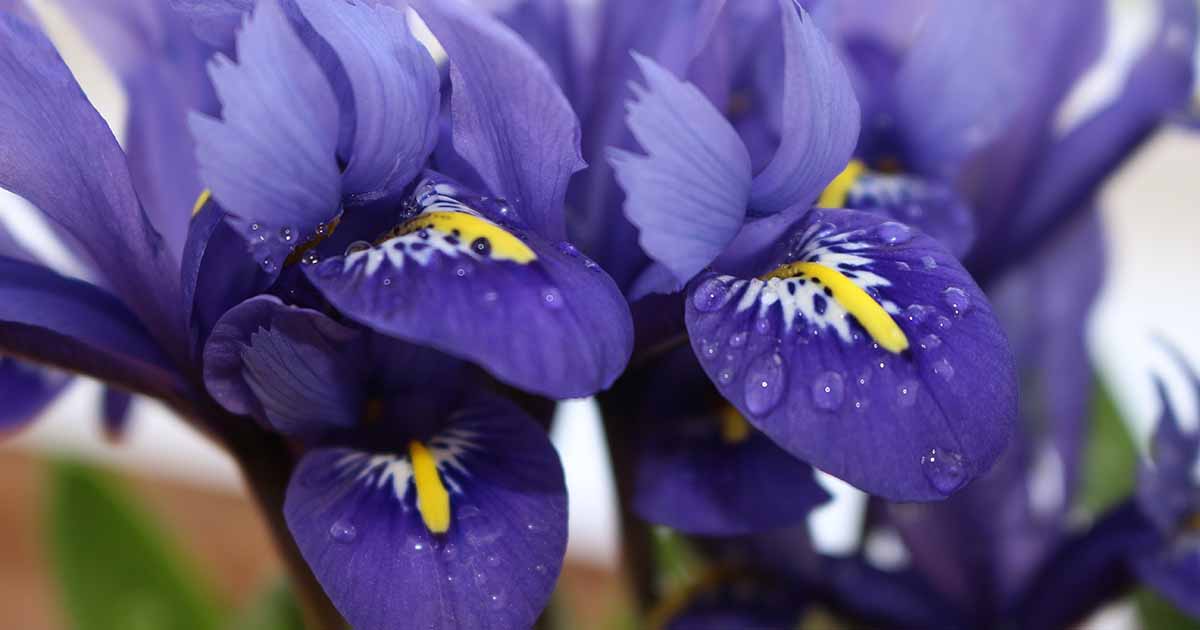Plants suited to xeriscaping, like native perennials and ornamental grasses with low moisture needs, can thrive in some of the driest garden soil.
Interplant with other early-spring blooming flowers, such as crocuses, daffodils, glory-of-the-snow, other irises, like the dwarf bearded (I. pumila), snowdrops, and hellebores. They, too, will be dormant by summer.
How to Grow
These plants prefer full sun to part shade and average, well-draining soil with a pH of 6.0 to 7.5.


During the spring growing season, the bulbs need even moisture. They prefer a dry dormant season from summer to winter and have a high tolerance for summer drought.
Too much rain during their dormant period can cause the bulbs to rot.
Provide an inch of water per week, including rain, from the time the foliage is visible until blooming finishes.
Fertilize post-bloom with a high-phosphorus, low-nitrogen product.
Cultivars to Select
In addition to the species growing in nature, many exciting cultivated varieties are available to the home gardener.
Here are three to whet your appetite:
Alida
‘Alida’ boasts light blue stands. The falls are a slightly darker blue shade and display a bright yellow crest, dark blue flecks, and white striations.


The lighter shade of this variety complements early-season pastels, like the blue, lavender, and pink shades of glory-of-the- snow.
Harmony
‘Harmony’ is a bright violet-blue flower. The falls have prominent golden crests, white stripes, and violet blue flecks.
The mellow tones complement those of early crocuses in lavender, white, and yellow hues.


‘Harmony’
Harmony is also an excellent choice for indoor forcing.
‘Harmony’ bulbs are available from Burpee.
Joyce
‘Joyce’ has deep blue petals with gold crests and splashes of white flecked with deep blue.


The richly saturated color pairs well with vibrant dwarf yellow daffodils.
Maintenance
The rule of thumb for irises is to divide them every three to five years in late summer or early fall to reduce volume.
Overcrowding is undesirable as it reduces air circulation, leads to moisture buildup, and increases the risk of fungal disease.
Here’s how:
- Use a garden fork to unearth a clump of bulbs gently.
- Brush away excess soil.
- Gently separate the larger conjoined bulbs that are as large as the “parent” bulbs or slightly smaller. Leave the smallest ones attached to mature further.
- Transplant the parents and mature offsets where desired.
You can learn more about dividing irises here.

